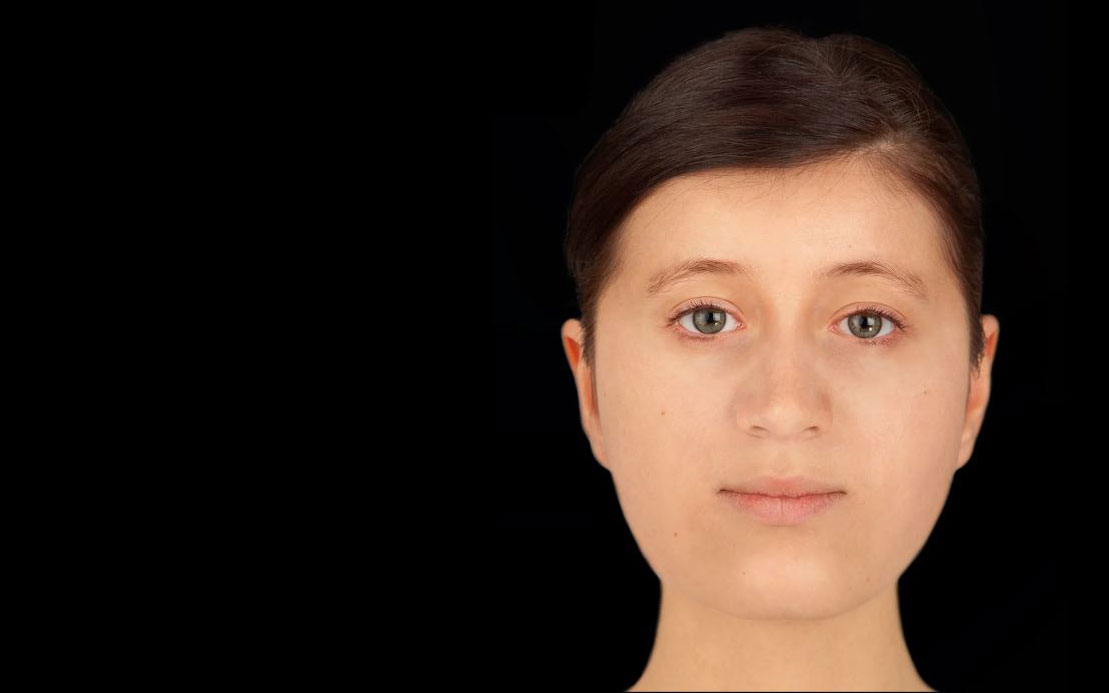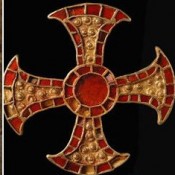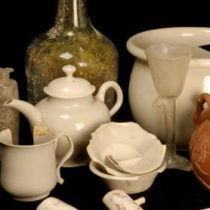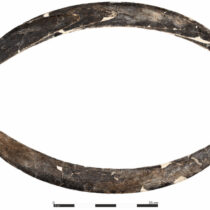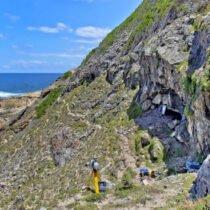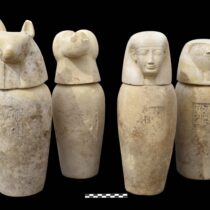The face of a 16-year-old woman buried near Cambridge in the 7th century with an incredibly rare gold and garnet cross (the ‘Trumpington Cross’) has been reconstructed following analysis of her skull.
The striking image is going on public display for the first time on 21st June 2023, with new scientific evidence showing that she moved to England from Central Europe as a young girl, leading to an intriguing change in her diet.
The image and artefacts from the mysterious woman’s burial – discovered in 2012 by the Cambridge Archaeological Unit at Trumpington Meadows on Cambridge’s southern limits – including her famous cross, will be unveiled in a major new exhibition at Cambridge’s Museum of Archaeology and Anthropology (MAA).
‘Beneath Our Feet: Archaeology of the Cambridge Region’ will run from 21st June to 14th April 2024.
Forensic artist Hew Morrison created the likeness using measurements of the woman’s skull and tissue depth data for Caucasian females.
Without DNA analysis, Morrison could not be sure of her precise eye and hair colour, but the image offers a strong indication of her appearance shortly before she died.
Hew Morrison said: “It was interesting to see her face developing. Her left eye was slightly lower, about half a centimetre, than her right eye. This would have been quite noticeable in life.”
A new life cut short
New “you are what you eat” isotopic analysis of the young woman’s bones and teeth – conducted by bioarchaeologists Dr Sam Leggett and Dr Alice Rose, and archaeologist Dr Emma Brownlee, during PhD research at the University of Cambridge – also reveals that she moved to England from somewhere near the Alps, perhaps southern Germany, sometime after she turned 7 years old.
Leggett and Rose also found that once the girl had arrived in England, the proportion of protein in her diet decreased by a small but significant amount. This change occurred close to the end of her young life, showing that the period between her migration and burial near Cambridge was tragically short.
Dr Leggett, now at the University of Edinburgh, said: “She was quite a young girl when she moved, likely from part of southern Germany, close to the Alps, to a very flat part of England.”
Previous analysis indicated that the young woman had suffered from illness but her cause of death remains unknown. She was buried in a remarkable way – lying on a carved wooden bed wearing the cross, gold pins (also on display) and fine clothing.
Hers is one of only 18 bed burials ever uncovered in the UK. Her ornate cross, combining gold and garnets (third quarter of the 7th century), is one of only five of its kind ever found in Britain and identifies her as one of England’s earliest converts to Christianity and as a member of the aristocracy if not royalty. The best known example of such a cross was found in the coffin of St Cuthbert.
In 597 AD, the pope dispatched St Augustine to England on a mission to convert the pagan Anglo-Saxon kings, a process which continued for many decades.
Dr Leggett said: “She must have known that she was important and she had to carry that on her shoulders. Her isotopic results match those of two other women who were similarly buried on beds in this period in Cambridgeshire.
“So it seems that she was part of an elite group of women who probably travelled from mainland Europe, most likely Germany, in the 7th century, but they remain a bit of a mystery. Were they political brides or perhaps brides of Christ? The fact that her diet changed once she arrived in England suggests that her lifestyle may have changed quite significantly.”
Dr Sam Lucy, a specialist in Anglo-Saxon burial from Newnham College, Cambridge, who published the Anglo-Saxon excavations at Trumpington, said:
“These are intriguing findings, and it is wonderful to see this collaborative research adding to our knowledge of this period.
“Combining the new isotopic results with Emma Brownlee’s research into European bed burials really does seem to suggest the movement of a small group of young elite women from a mountainous area in continental Europe to the Cambridge region in the third quarter of the seventh century.
